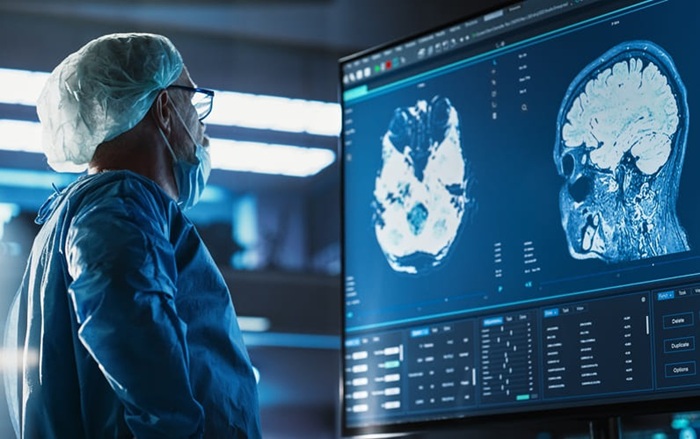MRI Helps Create Personalized Brain Temperature Maps
|
By MedImaging International staff writers Posted on 20 May 2021 |
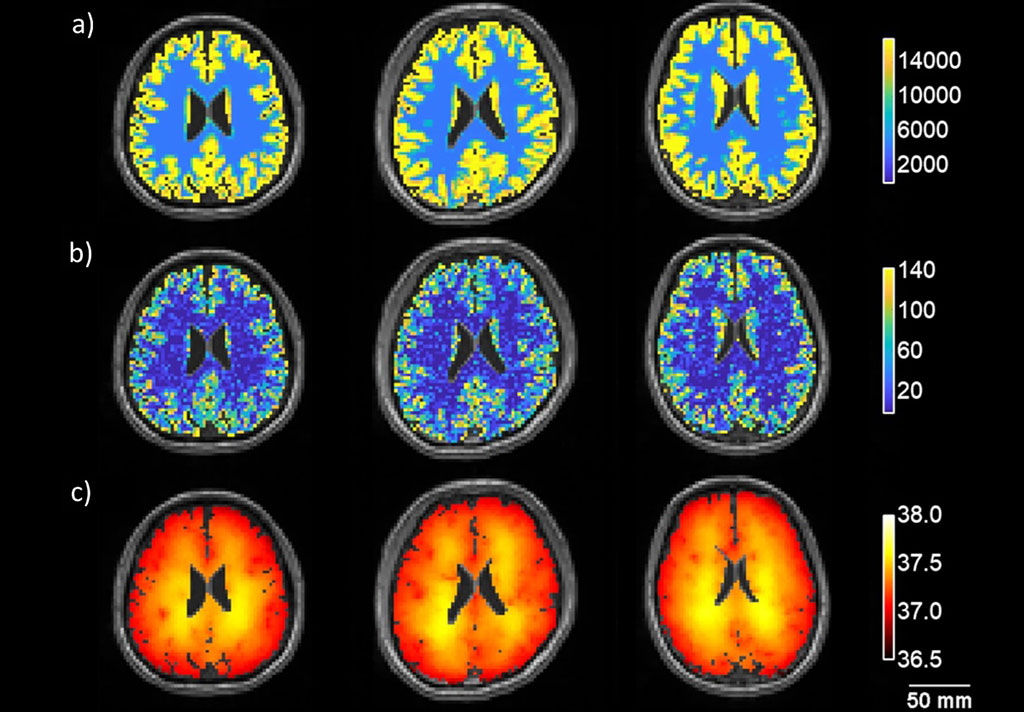
Image: Metabolic heat (a), cerebral blood flow (b) and model-predicted brain temperature (c) in three volunteers (Photo courtesy of Emory University)
A new study shows how data from magnetic resonance imaging (MRI) of brain tissue and vessel structure can facilitate personalized brain temperature predictions.
Developed by researchers at the Georgia Institute of Technology (Georgia Tech; Atlanta, GA, USA) and Emory University (Atlanta, GA, USA), the biophysical model can be used to generate 3D thermal distribution maps using whole brain MRI-based thermometry data. The model relies on two fundamental physical principles, conservation of energy and conservation of mass, to predict how heat is generated through metabolism and dissipated via blood flow throughout the brain, via conduction, convection, and advection.
For the study, the researchers first collected structural MRI brain images from three healthy volunteers. After several hours of data analysis and simulations, the biophysical model computed the distribution of brain temperature in the brain, visualized as three-dimensional (3D) maps. To validate the model, the researchers then collected temperature measurements using whole-brain MRI thermometry, compared these measurements to the model’s predictions, and found that they agreed. The study was published on April 15, 2021, in Communications Physics.
“Brain temperature varies throughout the brain as blood flow and metabolic demands change. This means that you cannot assign a single temperature to a brain,” said co-senior author Andrei Fedorov, PhD, of Georgia Tech. “All of the complexity [in the brain’s functioning] results in a very unique personal temperature map that actually tells us a lot about what may be happening to us, what may have happened in the past, or what may happen if we somehow perturb us as a human.”
Despite being only a fraction of the human body’s mass, the brain accounts for 20% of total oxygen consumption in resting conditions, which is used for neuronal metabolism, neural processes, and the functioning of glial, endothelial, and epithelial cells. All this energy is transformed into intense heat production. The brain is also exceptionally well vascularized, receiving 15–20% of total cardiac output, which also serves as the means to remove the heat continuously generated through brain metabolism and neurological function.
Related Links:
Georgia Institute of Technology
Emory University
Developed by researchers at the Georgia Institute of Technology (Georgia Tech; Atlanta, GA, USA) and Emory University (Atlanta, GA, USA), the biophysical model can be used to generate 3D thermal distribution maps using whole brain MRI-based thermometry data. The model relies on two fundamental physical principles, conservation of energy and conservation of mass, to predict how heat is generated through metabolism and dissipated via blood flow throughout the brain, via conduction, convection, and advection.
For the study, the researchers first collected structural MRI brain images from three healthy volunteers. After several hours of data analysis and simulations, the biophysical model computed the distribution of brain temperature in the brain, visualized as three-dimensional (3D) maps. To validate the model, the researchers then collected temperature measurements using whole-brain MRI thermometry, compared these measurements to the model’s predictions, and found that they agreed. The study was published on April 15, 2021, in Communications Physics.
“Brain temperature varies throughout the brain as blood flow and metabolic demands change. This means that you cannot assign a single temperature to a brain,” said co-senior author Andrei Fedorov, PhD, of Georgia Tech. “All of the complexity [in the brain’s functioning] results in a very unique personal temperature map that actually tells us a lot about what may be happening to us, what may have happened in the past, or what may happen if we somehow perturb us as a human.”
Despite being only a fraction of the human body’s mass, the brain accounts for 20% of total oxygen consumption in resting conditions, which is used for neuronal metabolism, neural processes, and the functioning of glial, endothelial, and epithelial cells. All this energy is transformed into intense heat production. The brain is also exceptionally well vascularized, receiving 15–20% of total cardiac output, which also serves as the means to remove the heat continuously generated through brain metabolism and neurological function.
Related Links:
Georgia Institute of Technology
Emory University
Latest MRI News
- Novel Imaging Approach to Improve Treatment for Spinal Cord Injuries
- AI-Assisted Model Enhances MRI Heart Scans
- AI Model Outperforms Doctors at Identifying Patients Most At-Risk of Cardiac Arrest
- New MRI Technique Reveals Hidden Heart Issues
- Shorter MRI Exam Effectively Detects Cancer in Dense Breasts
- MRI to Replace Painful Spinal Tap for Faster MS Diagnosis
- MRI Scans Can Identify Cardiovascular Disease Ten Years in Advance
- Simple Brain Scan Diagnoses Parkinson's Disease Years Before It Becomes Untreatable
- Cutting-Edge MRI Technology to Revolutionize Diagnosis of Common Heart Problem
- New MRI Technique Reveals True Heart Age to Prevent Attacks and Strokes
- AI Tool Predicts Relapse of Pediatric Brain Cancer from Brain MRI Scans
- AI Tool Tracks Effectiveness of Multiple Sclerosis Treatments Using Brain MRI Scans
- Ultra-Powerful MRI Scans Enable Life-Changing Surgery in Treatment-Resistant Epileptic Patients
- AI-Powered MRI Technology Improves Parkinson’s Diagnoses
- Biparametric MRI Combined with AI Enhances Detection of Clinically Significant Prostate Cancer
- First-Of-Its-Kind AI-Driven Brain Imaging Platform to Better Guide Stroke Treatment Options
Channels
Radiography
view channel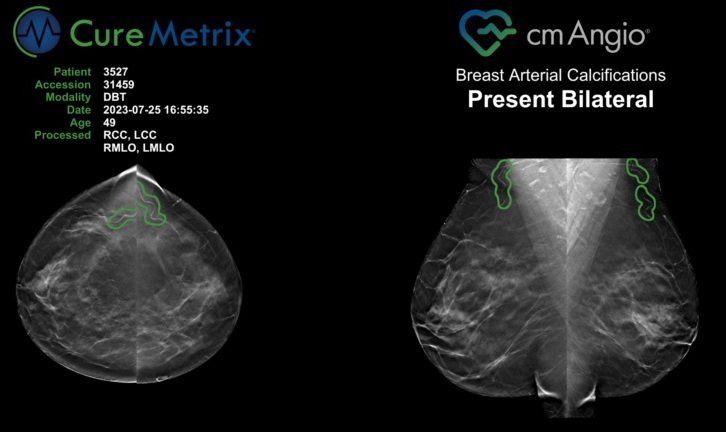
Routine Mammograms Could Predict Future Cardiovascular Disease in Women
Mammograms are widely used to screen for breast cancer, but they may also contain overlooked clues about cardiovascular health. Calcium deposits in the arteries of the breast signal stiffening blood vessels,... Read more
AI Detects Early Signs of Aging from Chest X-Rays
Chronological age does not always reflect how fast the body is truly aging, and current biological age tests often rely on DNA-based markers that may miss early organ-level decline. Detecting subtle, age-related... Read moreUltrasound
view channel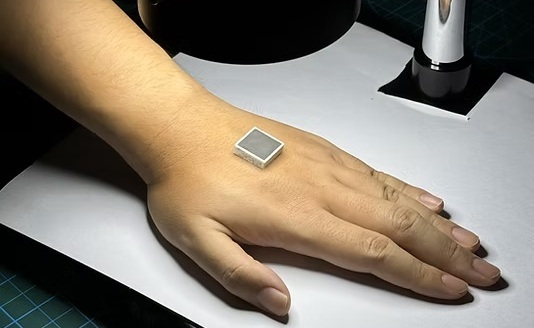
Wearable Ultrasound Imaging System to Enable Real-Time Disease Monitoring
Chronic conditions such as hypertension and heart failure require close monitoring, yet today’s ultrasound imaging is largely confined to hospitals and short, episodic scans. This reactive model limits... Read more
Ultrasound Technique Visualizes Deep Blood Vessels in 3D Without Contrast Agents
Producing clear 3D images of deep blood vessels has long been difficult without relying on contrast agents, CT scans, or MRI. Standard ultrasound typically provides only 2D cross-sections, limiting clinicians’... Read moreNuclear Medicine
view channel
PET Imaging of Inflammation Predicts Recovery and Guides Therapy After Heart Attack
Acute myocardial infarction can trigger lasting heart damage, yet clinicians still lack reliable tools to identify which patients will regain function and which may develop heart failure.... Read more
Radiotheranostic Approach Detects, Kills and Reprograms Aggressive Cancers
Aggressive cancers such as osteosarcoma and glioblastoma often resist standard therapies, thrive in hostile tumor environments, and recur despite surgery, radiation, or chemotherapy. These tumors also... Read more
New Imaging Solution Improves Survival for Patients with Recurring Prostate Cancer
Detecting recurrent prostate cancer remains one of the most difficult challenges in oncology, as standard imaging methods such as bone scans and CT scans often fail to accurately locate small or early-stage tumors.... Read moreGeneral/Advanced Imaging
view channel
AI-Based Tool Accelerates Detection of Kidney Cancer
Diagnosing kidney cancer depends on computed tomography scans, often using contrast agents to reveal abnormalities in kidney structure. Tumors are not always searched for deliberately, as many scans are... Read more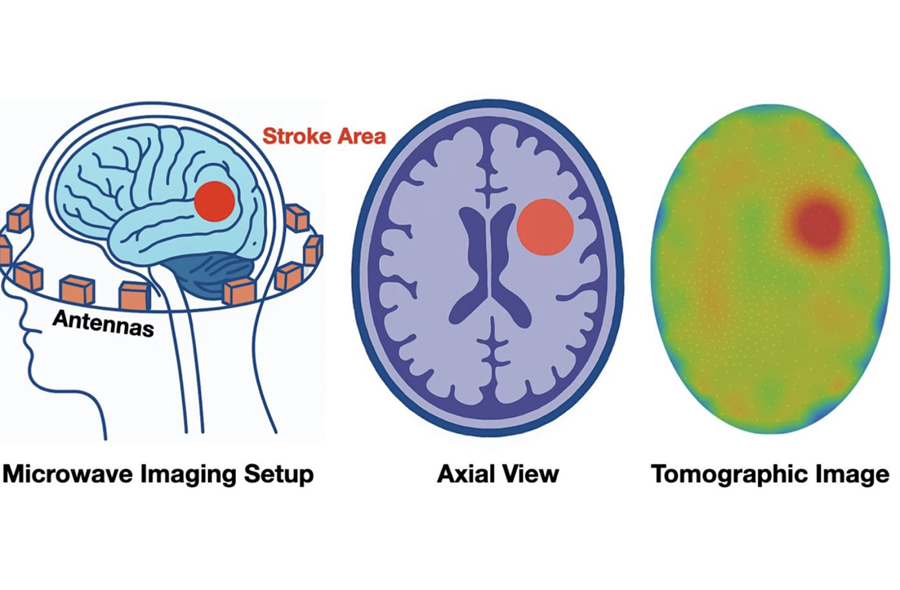
New Algorithm Dramatically Speeds Up Stroke Detection Scans
When patients arrive at emergency rooms with stroke symptoms, clinicians must rapidly determine whether the cause is a blood clot or a brain bleed, as treatment decisions depend on this distinction.... Read moreImaging IT
view channel
New Google Cloud Medical Imaging Suite Makes Imaging Healthcare Data More Accessible
Medical imaging is a critical tool used to diagnose patients, and there are billions of medical images scanned globally each year. Imaging data accounts for about 90% of all healthcare data1 and, until... Read more
Global AI in Medical Diagnostics Market to Be Driven by Demand for Image Recognition in Radiology
The global artificial intelligence (AI) in medical diagnostics market is expanding with early disease detection being one of its key applications and image recognition becoming a compelling consumer proposition... Read moreIndustry News
view channel
GE HealthCare and NVIDIA Collaboration to Reimagine Diagnostic Imaging
GE HealthCare (Chicago, IL, USA) has entered into a collaboration with NVIDIA (Santa Clara, CA, USA), expanding the existing relationship between the two companies to focus on pioneering innovation in... Read more
Patient-Specific 3D-Printed Phantoms Transform CT Imaging
New research has highlighted how anatomically precise, patient-specific 3D-printed phantoms are proving to be scalable, cost-effective, and efficient tools in the development of new CT scan algorithms... Read more
Siemens and Sectra Collaborate on Enhancing Radiology Workflows
Siemens Healthineers (Forchheim, Germany) and Sectra (Linköping, Sweden) have entered into a collaboration aimed at enhancing radiologists' diagnostic capabilities and, in turn, improving patient care... Read more

















